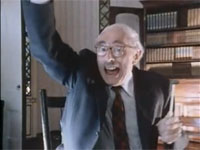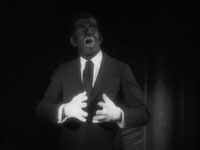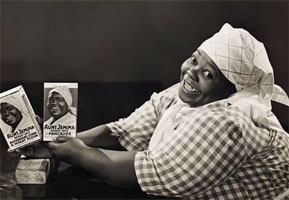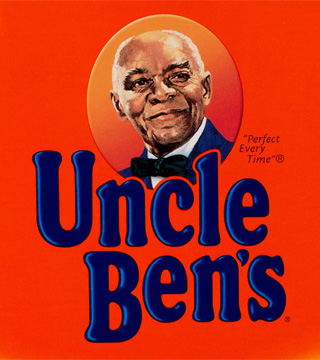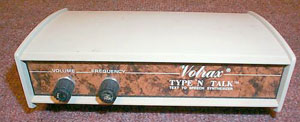disc 1
1. Prologue
- See also ARF: Notes & Comments.
Mark Pinske, January 23, 2003
The into to the "Mammy Nuns" song which is the very first thing on the Thing-Fish album was taken from the sound check at the [Stadthalle] in Vienna [June 28, 1982].
Frank started out by saying to me in the recording truck to go ahead and roll some tape because he wanted to lay down an idea for later.
He then did a guitar chord "dahnt da ta da da dahnt" on his guitar and clicked his footswitch for his "MXR" digital delay to loop. He then set his guitar on the stand and let it loop so I could record "with the PZM mics" the way it sounded going out into the room. I had the mics on stage pointing out toward the audience so you could hear the sound roll out from the stage into the room.
Frank loved the sound of empty rooms when there were no people in them. He conducted the band at that point and I think Tommy Mars (my roommate) took the first solo on the comper.
There is no artifictial reverb on start of that track at all. That was the sound of the room. There were many edits on the cut like there were on most cuts that took us all around the world.
he arranged to have a good-will visit to SAN QUENTIM
"San Quentin State Prison," Wikipedia, March 7, 2022
San Quentin State Prison (SQ) is a California Department of Corrections and Rehabilitation state prison for men, located north of San Francisco in the unincorporated place of San Quentin in Marin County. Opened in July 1852, San Quentin (called "The Arena" by prisoners) is the oldest prison in California.
since dey done used a few of 'em befo' when dey was messin' wit de ZYPH'LISS
"Tuskegee Syphilis Study," Wikipedia, January 26, 2022
The Tuskegee Study of Untreated Syphilis in the Negro Male (informally referred to as the Tuskegee Experiment or Tuskegee Syphilis Study) was a study conducted between 1932 and 1972 by the United States Public Health Service (PHS) and the Centers for Disease Control and Prevention (CDC) on a group of nearly 400 African Americans with syphilis. The purpose of the study was to observe the effects of the disease when untreated, though by the end of the study medical advancements meant it was entirely treatable. The men were not informed of the nature of the experiment, and more than 100 died as a result.
Science!
Patrick Buzby, March 19, 2010
I don't know if this has already been discussed, but "science!" near the end of Prologue sounds to me like a reference to Thomas Dolby's "She Blinded Me With Science."
Thomas Dolby, "She Blinded Me With Science" (single, October 1982)
Their hands are Jolson-style white gloved monstrosities.
Al Jolson, "Mammy" (The Jazz Singer, 1927) (2:04 min.)
The 'MAMMY NUN' costumes resemble the habits of some unknown order from the neck to the waist, with skirts patterned after the blue & white checkered napkin material favored by the lady on the 'Aunt Jemima' Pancake Box.
Anna Robinson as Aunt Jemima, c. 1933-1951.
- See also "Electric Aunt Jemima" on Uncle Meat (1969).
2. The Mammy Nuns
- See also ARF: Notes & Comments.
Tan Mitsugu, October 29, 2008
The source for the guitar outro of Mammy Nuns is now identified as Genoa (7/5). About four seconds of guitar frenzy are edited out at 3:27.
The ENSEMBLE lifts their skirts, revealing customized lawn-jockeys with the out-stretched lantern-bearing arm positioned between their legs.
- See "Uncle Remus" on Apostrophe (') (1974).
(D'ja get any on ya down dere?)
- See "Didja Get Any Onya?" on Weasels Ripped My Flesh (1970).
THING-FISH, clutching OB'DEWLLA, assumes an 'Ed Sullivan' pose, spot-lighted stage left.
"Ed Sullivan," Wikipedia, February 24, 2022
Edward Vincent Sullivan (September 28, 1901—October 13, 1974) was an American television personality, impresario, sports and entertainment reporter, and syndicated columnist for the New York Daily News and the Chicago Tribune New York News Syndicate. He was the creator and host of the television variety program The Toast of the Town, which in 1955 was renamed The Ed Sullivan Show. Broadcast from 1948 to 1971, it set a record as the longest-running variety show in US broadcast history.
3. Harry & Rhonda
- See also ARF: Notes & Comments.
HARRY, this is not DREAM GIRLS!
"Dreamgirls," Wikipedia, March 7, 2022
Dreamgirls is a Broadway musical, with music by Henry Krieger and lyrics and book by Tom Eyen. Based on the show business aspirations and successes of R&B acts such as The Supremes, The Shirelles, James Brown, Jackie Wilson, and others, the musical follows the story of a young female singing trio from Chicago, Illinois called "The Dreams", who become music superstars.
they probably have a formula . . . some special stuff . . . comes right outta the fur with Woolite.
"Woolite," Wikipedia, October 9, 2021
Woolite is an American brand of laundry detergent and cleaning products
4. Galoot Up-Date
- See also ARF: Notes & Comments.
Jes' follow de BLUE LIGHT, down de aisle to de potatoes durin' de intromissium . . .
BognarRegis, "Blue Light Question," Zappateers, September 24, 2018
K-Mart used to have a "Blue Light Special" held only for shoppers in the store at that moment. They had a blue police light mounted on a flagpole attached to a rolling bin. When it happened, an announcement would come over the store PA and people would be directed to the blue light where the special was being held. I always thought that's what the Thing Fish was referring to on the Thing Fish album.
5. The 'Torchum' Never Stops
- See also ARF: Notes & Comments.
Napoleon Murphy Brock, interviewed by Andrew Greenaway, April 29, 2002
The whole Evil Prince thing we developed together. We did that before he did Thing-Fish, because he hadn't even met Ike Willis yet. It wasn't even conceivable that here was a character that we could incorporate into an idea that he had that talked like Kingfish from the Amos & Andy Show. That was one of Ike's things, he had this deep voice and he used to mimic Kingfish. And Frank, anytime he saw something like that, he'd go "I can use this over here," and would structure something and utilise it to suit the new band's style. The whole idea of the Evil Prince came just by chance. We were doing a tour with Terry Bozzio, Roy Estrada and Andre Lewis. And one of the new songs we started doing was 'The Torture Never Stops', about this little cave where this mad scientist was doing all these nasty things. Now by this time, it was easy for me to elaborate on a concept. I would look at the lyrics and I'd know what he was trying to say. And I was spending a lot of time at second-hand clothing stores. So for each song I would get some clothes and develop a character. I would wear these white gymnastic pants with American flag suspenders. With these pants I could put on a jacket and a hat and I'd be a new character. Every jacket was a different colour. So while he was singing, "Flies all green and buzzin', in his dungeon of despair . . . " I would turn into this person who was a mad scientist that I found out later was called the Evil Prince.
[...]
Frank called me in 83 and he says "Listen, I'm doing this Broadway play called Thing-Fish, and I've got a part here that's perfect for you. Would you like to come down and audition for it?" I said "Sure, why not?" So I went down and said, "What's the part?" He says, "It's called the Evil Prince." And he told me all about it. And I said, "Oh, wait a minute—that's the character that we created when we used to do 'The Torture Never Stops'." He said, "That's right. You're perfect for the part." I said "Okay, well where's the music?" And he said, "Well, I haven't written it yet. I was waiting for you to come here." And he described the Evil Prince as this part time theatrical critic and mad scientist who was hired by the Government to create this vaccine, this stuff called Galoot Cologna. And what it really is is AIDS. [...]
And he said, "This is the character." Now Frank knew that I used to work in light opera and you know: light opera, fake opera singer—that kind of goes together. And he knows there had been times where I had used my little opera voice (demonstrates). So he knew I could do this before he called me, but he made it like "You want to try out for this?" But knowing all the time that he wrote it with me in mind. So after going through all the stuff together that we would do together in his studio—as far as singing, and things like that—he'd send everybody else home and say "Okay, come on, into my studio to the piano, and we're gonna do the song 'That Evil Prince'. He says "Bring your tape recorder" which I always did. And I put it on. And he says "Here are the lyrics, now I'm gonna play the notes. I'm creating it right now and I need you to tape it so you can learn it, and when you come back I'll have the tracks ready and you can sing on it." So he played one line at a time, then I'd record it. And that's how we did the whole song. And it's a very long song.
Doors open all over the dungeon and BROADWAY ZOMBIES emerge. There is a PETER PAN zombie
"Peter Pan (1954 musical)," Wikipedia, March 7, 2022
Peter Pan is a musical based on J. M. Barrie's 1904 play Peter Pan and his 1911 novelization of it, Peter and Wendy. The music is mostly by Moose Charlap, with additional music by Jule Styne, and most of the lyrics were written by Carolyn Leigh, with additional lyrics by Betty Comden and Adolph Green. The original 1954 Broadway production, starring Mary Martin as Peter and Cyril Ritchard as Captain Hook, earned Tony Awards for both stars.
[...] The show was revived in 1979 on Broadway at the Lunt-Fontanne Theatre, produced by Nancy and Ronnie Horowitz, starring Sandy Duncan and George Rose, and ran for 554 performances.
a HELLO DOLLY zombie
"Hello, Dolly! (musical)," Wikipedia, February 27, 2022
Hello, Dolly! is a 1964 musical with lyrics and music by Jerry Herman and a book by Michael Stewart, based on Thornton Wilder's 1938 farce The Merchant of Yonkers, which Wilder revised and retitled The Matchmaker in 1955. The musical follows the story of Dolly Gallagher Levi, a strong-willed matchmaker, as she travels to Yonkers, New York, to find a match for the miserly "well-known unmarried half-a-millionaire" Horace Vandergelder.
an OKLAHOMA zombie
"Oklahoma!," Wikipedia, March 17, 2022
Oklahoma! is the first musical written by the duo of Rodgers and Hammerstein. The musical is based on Lynn Riggs' 1931 play, Green Grow the Lilacs. Set in farm country outside the town of Claremore, Indian Territory, in 1906, it tells the story of farm girl Laurey Williams and her courtship by two rival suitors, cowboy Curly McLain and the sinister and frightening farmhand Jud Fry. A secondary romance concerns cowboy Will Parker and his flirtatious fiancée, Ado Annie.
The original Broadway production opened on March 31, 1943. It was a box office hit and ran for an unprecedented 2,212 performances.
and an ANNIE zombie (with her zomby-dog).
"Annie (musical)," Wikipedia, March 8, 2022
Annie is a Broadway musical based upon the popular Harold Gray comic strip Little Orphan Annie and loosely based on the 1885 poem "Little Orphant Annie" written by James Whitcomb Riley. The musical includes music by Charles Strouse, lyrics by Martin Charnin, and a book by Thomas Meehan. The original Broadway production opened in 1977 and ran for nearly six years, setting a record for the Alvin Theatre (now the Neil Simon Theatre).
I'll say that it's tasteless, and that you will find
A better excuse to spend money or time
At a Tupper-Ware Party
"Tupperware," Wikipedia, March 2, 2022
Tupperware is still sold mostly through a party plan, with rewards for hosts and hostesses. A Tupperware party is run by a Tupperware "consultant" for a host or hostess who invites friends and neighbors into their home to see the product line. Tupperware hosts and hostesses are rewarded with free products based on the level of sales made at their party.
6. That Evil Prince
- See also ARF: Notes & Comments.
Zombies, I believe . . . the 'walking dead' . . . Jack Palance did a show on them once.
"Jack Palance," Wikipedia, March 8, 2022
Jack Palance ([...] February 18, 1919—November 10, 2006) was an American actor. Known for playing tough guys and villains, he was nominated for three Academy Awards, all for Best Actor in a Supporting Role [...]. He also served as the host of the ABC television series Ripley's Believe It or Not! (1982—1986).
8. Mudd Club
- See also ARF: Notes & Comments.
QUENTIN ROBERT DE NAMELAND
Down there right now
- Quentin Robert De Nameland is mentioned in "The Adventures Of Greggery Peccary" on Studio Tan (1978) and Läther (1996); "Mudd Club," "The Meek Shall Inherit Nothing," "Clowns On Velvet" and "The White Boy Troubles" on Thing-Fish (1984); and chapters two, nine, ten and eleven on Them Or Us (The Book) (1984).
- See also Quentin Robert De Nameland drawing, FZ & GZ, 1970-1971.
9. The Meek Shall Inherit Nothing
- See also ARF: Notes & Comments.
Welcome to the QUENTIN ROBERT DE NAMELAND VIDEO CHAPEL OF ECONOMIC WORSHIP!
- Quentin Robert De Nameland is mentioned in "The Adventures Of Greggery Peccary" on Studio Tan (1978) and Läther (1996); "Mudd Club," "The Meek Shall Inherit Nothing," "Clowns On Velvet" and "The White Boy Troubles" on Thing-Fish (1984); and chapters two, nine, ten and eleven on Them Or Us (The Book) (1984).
- See also Quentin Robert De Nameland drawing, FZ & GZ, 1970-1971.
10. Clowns On Velvet
- See also ARF: Notes & Comments.
FZ, interviewed by John Swenson, Guitar World, March 1982
I am going for optimum solutions to musical problems. And I think I am doing it the right way. I am providing good solutions to the empty canvas problem. Okay, I think other people are providing really boring solutions to the empty canvas problem. Really safe, really boring, but entirely competent solutions to the problem. To me, a lot of other people sound like clowns on velvet. You know what I mean? If you have a piece of black velvet and wanted to solve that problem you'd paint a nice clown on there. You know? Or you do one of those Keane paintings with the children with the large eyes. You know, somebody likes that stuff. And there it is for them. That is not my solution to the empty canvas problem. I am going for something else.
The Missing Al Di Meola Guitar Solo
- See notes on Al Di Meola & "Clowns On Velvet."
Scene changes to a pair of adjoining rooms at The Alladin Hotel in Las Vegas.
"Planet Hollywood Las Vegas," Wikipedia, March 14, 2022
Planet Hollywood Las Vegas (formerly the Aladdin) is a casino hotel on the Las Vegas Strip in Paradise, Nevada. [...] The property was previously the site of an earlier resort known as the Aladdin, which operated from 1962[4] to 1997. [...] The property was initially the site of the Tallyho hotel, opened by Edwin S. Lowe in 1962. It was sold later that year and renamed as King's Crown Tallyho. In 1966, Milton Prell purchased the hotel and reopened it as the Aladdin.
In the adjoining room, OPAL drinks from a bottle of Jack Daniels
"Jack Daniel's," Wikipedia, March 14, 2022
Jack Daniel's is a brand of Tennessee whiskey. It is produced in Lynchburg, Tennessee, by the Jack Daniel Distillery, which has been owned by the Brown—Forman Corporation since 1956.
QUENTIN done booked in fo some clandestine recreatium wit a semi-deflateable 'woman of easy virtue' . . . (since dat be 'bouts de onliest kinda bitch be able to tolerate de muthafucker's hair spray!) [...]
QUENTIN know a good thing when he see one, an dis ugly rubber waitress look to him like a dream come true . . .
- Quentin Robert De Nameland is mentioned in "The Adventures Of Greggery Peccary" on Studio Tan (1978) and Läther (1996); "Mudd Club," "The Meek Shall Inherit Nothing," "Clowns On Velvet" and "The White Boy Troubles" on Thing-Fish (1984); and chapters two, nine, ten and eleven on Them Or Us (The Book) (1984).
- See also Quentin Robert De Nameland drawing, FZ & GZ, 1970-1971.
11. Harry-As-A-Boy
- See also ARF: Notes & Comments.
I can't afford to study with anyone yet, since the bulk of my allowance goes for glue and Grateful Dead tickets
- See "Teen-age Wind" on You Are What You Is (1981).
You means DE WOMENS' LIBROMATION MOVENINT done created de uncontrollable urgement to play dingle-dangle-dingle wit de personal requipment of yo own gender?
- See "Bobby Brown" on Sheik Yerbouti (1979).
12. He's So Gay
- See ARF: Notes & Comments.
- See notes on "Won Ton On."
- See notes on "Carol, You Fool" on You Can't Do That On Stage Anymore Vol. 3 (1989).
Johnny Guitar Watson Comments
Special thanks to Byron Holmes.
| Comments | "He's So Gay" (Thing-Fish, CD, 1990) | "Won Ton On" (Thing-Fish Demo, 1984) |
|---|---|---|
| Yes, he is I guess he likes it Yeah |
0:15-0:20 | 3:27-3:31 |
| Uh-huh Into . . . into rubber? Wha . . . the boy's into rubber every night! Oh, my goodness Whoo . . . |
0:24-0:36 | 3:36-3:47 |
| Yeah, that's what they say | 0:38-0:39 | 3:49-3:51 |
| Aww . . . look, have you ever SMELLED rubber? I guess it's okay, l-look at his woman, yeah . . . I-I guess it's all right Mm-hmm |
0:43-0:51 | 3:54-4:02 |
| Uh-huh Don't tell me that |
0:54-0:59 | 4:06-4:10 |
| Mm-hmm Yeah |
4:16-4:18 | |
| Uh . . . a spanking? Uh . . . well, eat the chain |
1:10-1:15 | |
| Uh-huh Wait a minute . . . |
1:18-1:20 | 4:29-4:31 |
| Wh . . . M . . . makin' into rai . . . ? Oh no! |
1:21-1:26 | |
| What is the problem? Uh-oh UHH-OHH Yeah, that's what it is |
1:28-1:35 | 4:40-4:47 |
| Ohh boy . . . Wha . . . what could ya say? I agree Uh . . . 'least the boy ain't gonna reproduce hisself again |
1:40-1:52 | 4:51-5:03 |
| Uh-huh Hey hey hey . . . |
1:55-1:58 | 5:06-5:09 |
| Hoooo, that's shockin'! Muh-muh-muh-muh-muh-muh Ooof! I'm telling ya |
2:08-2:14 | 5:20-5:26 |
| What I'm a borrow? | 2:17-2:18 | |
| No way! Don't you tell me this I said don't you tell me this! No! No! No! Oh, gay . . . |
2:19-2:36 | 5:31-5:48 |
| You just did! | 2:40-2:41 |
The MAMMIES, now semi-disguised in bits of 'VILLAGE PEOPLE' costumery, attach a flying harness to HARRY-AS-A-BOY.
"Village People," Wikipedia, March 18, 2022
Village People is an American disco group known for its on-stage costumes and suggestive lyrics in their music. The group was originally formed by French producers Jacques Morali, Henri Belolo and lead singer Victor Willis following the release of the debut album Village People [(1977)], which targeted disco's large gay audience.
BROWN MOSES (looking suspiciously like the guy on the fronf of the Uncle Ben's Rice box) makes his entrance.
"Ben's Original," Wikipedia, March 18, 2022
Ben's Original, formerly known as Uncle Ben's, is an American brand of parboiled rice and other related food products that was introduced by Converted Rice Inc., which is now owned by Mars, Inc. Its headquarters are in Denver Harbor, Houston, Texas. Uncle Ben's rice was first marketed in 1943 and was the top-selling rice in the United States from 1950 until the 1990s. In 2020, it was rebranded as "Ben's Original".
[...] From 1946 to 2020, Uncle Ben's products carried the image of an elderly African-American man dressed in a bow tie, which is said to have been based on a house negro waiter.
13. The Massive Improve'lence
- See also ARF: Notes & Comments.
I WANT A NUN!
I WANT A NUN!
I WANT A BURRO,
IN THE FROSTY LIGHT!
- See "King Kong" on You Can't Do That On Stage Anymore Vol. 3 (1989).
while de ones with de M.B.A.'s hit de lobby 'n sell some shit
"Master Of Business Administration," Wikipedia, March 15, 2022
A Master of Business Administration (MBA; also Master's in Business Administration) is a graduate degree focusing on business administration and investment management. [...] It originated in the United States in the early 20th century when the country industrialized and companies sought scientific management.
14. Artificial Rhonda
- See also ARF: Notes & Comments.
What's a nice girl like you doing in a place like this?
- This line appears at least in "Flower Punk" on We're Only In It For The Money (1968), "What Kind Of Girl Do You Think We Are?" on Fillmore East—June 1971 (1971), "Stick It Out" on Joe's Garage Acts II & III (1979), "Artificial Rhonda" on Thing-Fish (1984), and "Dancin' Fool" on You Can't Do That On Stage Anymore Vol. 5 (1992).
Do you come here often?
- This line appears at least in "Stick It Out" on Joe's Garage Acts II & III (1979), "Artificial Rhonda" on Thing-Fish (1984), and "Dancin' Fool" on You Can't Do That On Stage Anymore Vol. 5 (1992).
